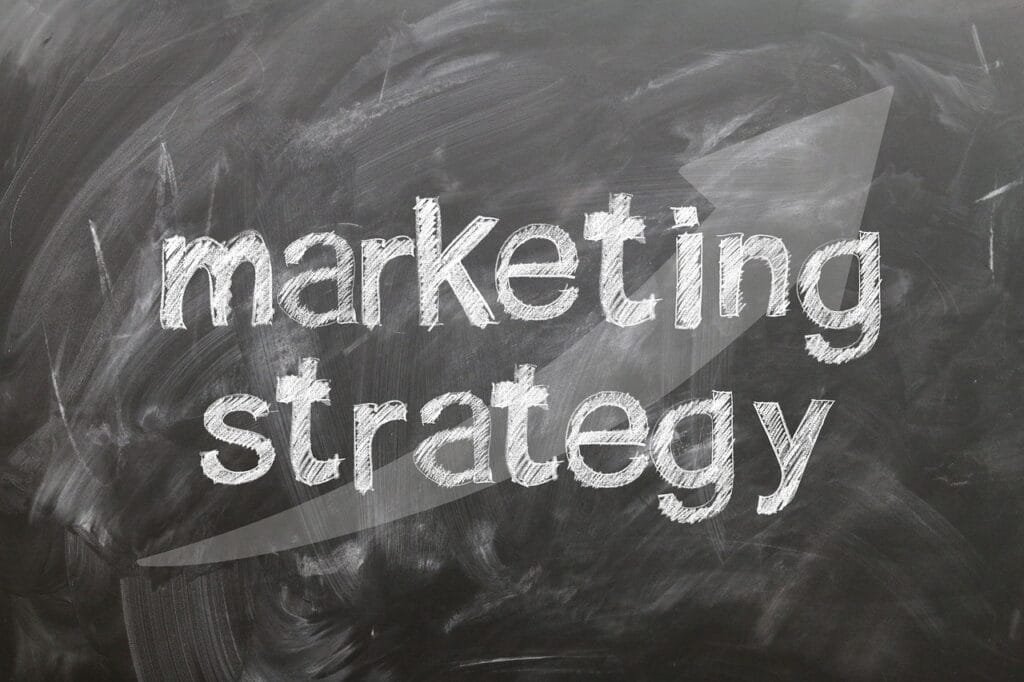Understanding Customer Needs
Hey, let’s talk customer experience. I get it – you need to know what makes your customers tick. By truly understanding what they want, I can cook up a customer experience strategy that hits home.
Importance of Personalized Experiences
In a market that’s all about one-upping the competition, giving each customer a unique touch is a must. Did you know that, according to Salesforce, a hefty 66% of customers want businesses to get them (HBS Online)? Personalization isn’t just about slapping their names on emails. It’s about crafting experiences that suit their taste – like their favorite custom coffee order.
When you nail personalization, it’s not just good vibes; it’s good for business. More than half of customers are ready to cough up extra cash for a better experience. That means personalization is a win-win: more happy customers and a healthier bottom line.
Methods for Assessing Customer Needs
To really know what customers need, I like to mix things up with a few tried-and-true tricks. It’s all about getting into their heads without actually reading minds. Here’s how I do it:
Open-Ended Questions: When I chat with customers, I ask questions that let them spill their thoughts. It’s like striking gold for insights.
Interviews: Sitting down for a good ol’ Q&A with customers helps me get the full scoop on what they want and need.
Empathy Mapping: I try to walk a mile in my customers’ shoes. This gives me a feel for their perspective and helps me understand their journey.
There’s this neat “Look, Ask, Try” thing in Design Thinking, too. It’s about watching what customers do, asking smart questions, and letting them test out solutions. This helps uncover needs they didn’t even know they had (HBS Online).
All in all, by putting the spotlight on individual experiences and using these methods, I’m in a better spot to design strategies that keep up with changing expectations. More and more businesses are betting big on customer experience management. It’s a big deal now, with over 45% of companies stepping up their game compared to a measly 36% back in 2010 (SuperOffice).
Design Thinking for Customer Experience
Design thinking is kinda my go-to when I’m plotting a killer customer experience strategy. Keeping it real by putting people first helps ensure we’re always in tune with what our customers actually want—no guesswork involved.
Human-Centric Approach
In the game of design thinking, it’s all about understanding what makes customers tick—their dreams, annoyances, and all. I like to put myself right in their shoes, and here’s how it works: I chat with them, ask big-picture questions, and really pay attention to their stories. It’s like being an empathetic detective. You gotta see the world as they do to craft stuff that truly clicks with them.
One method that’s practically a cheat code is the “Look, Ask, Try” framework. By watching how folks react, quizzing them on their needs, and testing our ideas, I end up with golden nuggets of wisdom. These insights don’t just stimulate innovation; they guide us to concoct solutions that really work for those sneaky, often overlooked customer cravings.
Insights from User Experiences
Diving into user experiences is like being handed a treasure map for a customer-centric strategy. When I piece together all the data from different interaction points, it becomes apparent how folks relate to our brand. This awareness helps mold processes that’ll make their overall journey with me smoother.
I rely on stats that give me a good read on how invested people are in what I’m offering. Peep this table for some serious number-crunching action:
| Insights | Description |
|---|---|
| Customer Satisfaction Score (CSAT) | This one tells me how happy customers are with my stuff. |
| Net Promoter Score (NPS) | It’s a peek into how likely they are to shout about us to their pals. |
| Customer Effort Score (CES) | This is all about seeing how much hassle they go through dealing with us. |
By lacing these insights together, I’m all about gearing up the experience for whatever trends roll in with customer habits. Understanding their journey is crucial for tweaking and perfecting what we offer.
Wanna go down the rabbit hole of ways to boost customer experiences, especially in e-commerce and personalization? Dive into customer experience e-commerce and personalized customer experience. Using these approaches not only cranks up customer satisfaction but strengthens brand loyalty, setting us up for the long haul.
Key Performance Indicators (KPIs)
Keeping tabs on how well my gallant efforts in customer experience land with the audience ain’t just a good idea—it’s the only idea. The right KPIs? Yep, they’re like grabbing onto the heartstrings of customer vibes, satisfaction, the whole shebang of keeping folks around, and how well we’re clicking.
Measuring Effectiveness
Let’s be honest, some data nuggets deserve a spotlight more than others. Picking the right KPIs isn’t just a fancy choice; it’s the heartbeat of knowing what’s happening with the folks out there. Get this: feelings count just as much as numbers. Stuff like First Response Time and Average Handling Time? They’re your bread and butter, pal. Customers waiting too long get cranky—ain’t nobody got time for that. So, by zeroing in on these markers, I can spot service shortcomings and fix ’em up before things go south (Zight).
| KPI | The Goal |
|---|---|
| First Response Time | Mostly under 5 minutes |
| Average Handling Time | Generally under 7 minutes |
Crucial Metrics for CX
There’s a toolbox of trusty metrics for gauging how customers are feeling—like a cheat sheet to fine-tune my strategy. Here’s the lowdown:
Net Promoter Score (NPS): This little number spills the beans on whether customers are happy enough to go shouting recommendations from the rooftops. High scores? That’s my happy crew telling tales of loyalty or giving us the heads-up on where to polish things up (Zight).
Customer Satisfaction (CSAT): This score paints a vivid picture of how things went down with customer chats, giving me the 411 on their overall trek.
Customer Effort Score (CES): It’s a measure of how much elbow grease customers need to connect with my biz. Low effort score means they’re breezin’ through and loving it.
Churn Rate: The rate at which folks slip away as customers. It’s like a big flashing sign pointing at spots that need some tender loving care to keep ’em around.
Customer Lifetime Value (CLV): This one’s your crystal ball for peering into the future profits a customer’s gonna bring in. It’s a roadmap on who’s bringing in the dough and how to woo each group right.
| Metric | Why It Matters |
|---|---|
| NPS | Forecasts who’s singing my praises |
| CSAT | Tells if interactions left a smile |
| CES | Ease-o-meter for customer dealings |
| Churn Rate | Snapshot of customer loyalty |
| CLV | Predicts thick wallets from repeat peeps |
These KPIs and metrics? They’re the holy grail for seeing if we’re hittin’ the mark on customer experience (Forbes). Keepin’ an eye, like tuning into a good playlist, helps fine-tune and crank up those customer experience efforts.
Enhancing Customer Experience
Impact on Business Goals
I’ve seen how putting the spotlight on customer experience can really drive business success. Companies that nail it in this department are three times more likely to smash their top business goals for the year (NICE). That’s because folks are waking up to the fact that customer experience is where the real battle for consumers happens. Did you know that a whopping 46% of businesses consider customer experience as their main focus for the next five years, even trumping their worries about product and pricing (NICE)?
Check out this table showcasing the link between focusing on customer experience and raking in the profits:
| Customer Experience Focus | Likelihood of Exceeding Goals | Profitability |
|---|---|---|
| High Focus | 3x More Likely | 60% Higher Profits |
| Low Focus | N/A | N/A |
Realizing customer experience digs directly into boosting revenue is a big deal. Brands championing customer experience report profits that are 60% higher than those who brush it aside (SuperOffice). So, if you’re cooking up a business strategy, make sure that dish is heavy on customer experience seasoning.
Building Customer Loyalty
Speaking of keeping folks around, building customer loyalty goes hand in hand with enhancing their experience. Happy campers often become loyal, and who doesn’t want more of them? Loyal customers come back for more and even spread the word. And just keeping an eye on things like customer churn can lend a hand in understanding true loyalty. Tuning in to why customers jump ship gives you the scoop on how to fine-tune your approach (Zight).
The whole customer experience paints the picture customers have of a brand as they make their way through the buying process. This not only affects satisfaction but also how likely they are to recommend your brand to pals (HubSpot). Building those personal touches can skyrocket loyalty.
For boosting loyalty, I’d say try rolling out customer journey mapping to pinpoint those key interactions that sway overall satisfaction. Aligning customer experiences with their expectations can lead to killer customer experience management practices that create bonds that last.
When I focus on customer experience with a clear eye on goals and loyalty, I’ve seen brands turn these relationships into a standing-out-from-the-crowd advantage. Stepping up with a customer-first approach isn’t just the next step—it’s the step that sets you apart by not just meeting expectations, but blowing them away.
Challenges in CX Implementation
Boosting how customers feel about your brand can be tricky. Here, I’ll walk you through a couple of big hurdles I’ve faced in making customer experiences better: keeping customers coming back and keeping up with their changing wants.
Designing for Customer Loyalty
Keeping folks loyal is a core part of a winning customer strategy. It’s all about figuring out why people stick with your brand. Turns out, businesses that focus on making customers happy are far more likely to hit their targets. You gotta go beyond just meeting needs—aim to wow them.
Here’s what I keep an eye on when trying to build that loyalty:
| Metric | Description |
|---|---|
| Customer Satisfaction (CSAT) | Checks if folks are happy with what you’re offering. |
| Customer Lifetime Value (CLV) | Looks at how much moolah a customer brings over time. |
| Net Promoter Score (NPS) | Measures if people would give a shout out to your brand. |
Just a couple of bad experiences can send customers running for the hills. A startling stat shows only two sour engagements can make folks jump to a rival. That’s why I’m all about tackling complaints fast and smart.
Addressing Evolving Customer Needs
With the market shifting quicker than a cat on a hot tin roof, tuning in to what customers want is crucial. I take a living, breathing approach to customer experience, focusing on forging bonds that last. It’s all about tracking feedback and spotting market trends regularly.
Numbers don’t lie, so I lean on them to feel the customer’s pulse. Key metrics are:
| Metric | Description |
|---|---|
| Customer Effort Score (CES) | Finds out how hard it is for customers to fix an issue. |
| Customer Experience Metrics | Digs into many parts of the customer journey to see what can get better. |
Tools like customer journey mapping help paint a clear picture of client touchpoints. Visualizing these helps me spot any bumps that could ruin the ride.
Implementing a bulletproof experience strategy isn’t easy, but it can be done. If you’re all about loyalty and keeping pace with the customers’ whims, you’re on the right track. Sizing up those metrics and rolling with the punches leads to happier customers and lasting attachment. For added ideas, digging into digital customer experience and customer experience in retail could help fine-tune my approach.
Transformative Business Models
When you look around these days, it’s clear that businesses gotta shake things up to stay in the game. I’ve seen companies tweak their playbooks and those that get it right, well, they often wind up with happier customers. It’s all about keeping up with what folks want.
Success Stories of Adaptation
So, let’s chat about some big names that switched gears in a big way. Netflix took the leap from mailing DVDs to streaming them, and now they’re drawing in over 109 million eyeballs worldwide. Churning out their own shows really flipped the script on how we binge-watch TV, making it all about you getting what you want, when you want it.
And then there’s Amazon — they kicked things off as your go-to for books and then morphed into the world’s everything store. They knew that making life easier for shoppers was the way to win hearts and wallets. Their knack for improving how we shop left a mark on the whole scene.
| Company | Started As | Turned Into | Big Wins |
|---|---|---|---|
| Netflix | DVD mailer | Streaming giant | Over 109 million subscribers |
| Amazon | Bookstore | Mega-retailer | Changed how we shop online |
| Yellow Pages | Phonebook | Digital directory | Found a new life on Yell.com |
| Lego | Toy bricks | Partnering with franchises | Bounced back and stood tall |
| Disney | Cartoon creator | Movie and media powerhouse | Stays on top with new and old fans |
Reinventing Business Strategies
Yellow Pages tossed out the old phonebook in 2019, jumping headfirst into the digital age with Yell.com. This move helped them stay relevant in a world where everyone goes online to find what they need.
Then there’s Disney; their game plan is nothing short of genius. Snapping up brands like Pixar and Marvel while giving their old characters a fresh facelift has kept them in the spotlight. They know how to win over both the old fans who love nostalgia and the newbies looking for fresh stories.
These examples show that you gotta stay on your toes if you wanna keep your business alive and kicking. The only constant is change, and keeping your customers in mind is the name of the game. If you’re on the hunt for ways to up your customer experience game, dive into some resources on customer experience management and pick up tips from improving customer experience.
Customer-Centric Strategies
Crafting a customer-focused game plan is like getting to know your best mate inside out—except this time, it’s about your customers and catching the latest vibes. Hit the mark on understanding them, and you’re not just in the game; you’re winning it.
Personalization and Connection
Listen, people these days aren’t looking to be just another brick in the wall. They expect businesses to get them—66 percent of folks do, according to Salesforce’s “State of the Connected Customer” report. That’s a lot of folks! Being clued into what they want isn’t just smart business; it’s the name of the survival game in today’s hustle (says HBS Online). It’s like personalizing every little thing: offers, chats, and all the rest.
Here’s how you can step up your personalization game:
| Strategy | All About It |
|---|---|
| Customer Data Magic | Use that juicy data to figure out what makes customers tick and give them just what they’re after. |
| Smart Grouping | Split up folks into groups based on their age, likes, and what they’ve been buying. |
| Personalized Little Nods | Drop hints and nudges based on what they’ve bought or peeked at before. |
Making that connection with customers isn’t about getting a sale and seeing ya later; it’s about folding emotional ties into the mix. Like, instead of just saying, “Hey, buy this,” ask open-ended questions and have a heart-to-heart. This isn’t just about buying a product; it’s about making friends and keeping them around (HBS Online).
Adapting to Evolving Behaviors
Customers are a bit like trends in your social media feed; always shifting, always with the next big thing. Knowing this, businesses better keep up and stay quick on their feet. If you nail the customer experience, folks are gonna stick around and chat you up to their pals—that’s how word-of-mouth runs circles around those ad dollars (HubSpot says so anyway, with 92% more trust (HubSpot)).
Mind these tricks to roll with the changes:
| Strategy | How it Works |
|---|---|
| Always Listening | Keep an ear to the ground with customer feedback to see where improvements can make a splash. |
| Flexible Marketing Moves | Be ready to turn on a dime with marketing tactics as customer tastes twist and turn. |
| Tech that Talks | Use gadgets and platforms that let you yap with customers in real-time. |
Keep your eye on the prize—a flexible customer experience strategy. Being the customer’s champion isn’t just about scoring one-time wins but baking long-lasts bonds and securing your patch in the market.
If you’re itching for more juicy details on measuring your customer strategy’s success, snoop around our pieces on customer experience metrics and customer experience analytics.
Case Studies of Reinvention
Success and Growth Stories
I’ve been on a mission to up my game with customer experiences, and let me tell you, a few brands have totally changed the way I see things. Their reinventions not only show how they’re keeping up with the times but also how they’re matching up with what folks like us actually want now.
Take American Express for instance. Way back in the mid-1900s, they decided to shake things up by launching a charge card. This wasn’t just a new product; it was a complete game-changer, opening up credit options for both folks and businesses. Fast forward to 2022, and there’s a whopping 133 million credit cards swirling around both here in the U.S. and across the pond. Talk about a company knowing exactly what folks need and running with it (U.S. Chamber of Commerce).
Then there’s Chipotle, who in 2020, rolled out their “Chipotlanes,” which is just a fancier way of saying drive-thru for burrito lovers. They’ve seen such a boom from it. They’re on track to open up around 250 new spots and hire about 7,000 people by 2023. Can you believe they’re planning even more with 285 to 315 new spots in 2024? It’s a classic, “give the people what they want” tale.
Innovation and Transformation
Innovation is like the secret sauce, right? Check out Slack. It started from a flop of a game company. But then, they switched gears and became a hit with their business chat app. By 2022, they were serving about 169,000 paying customers and hitting around 20 million active users daily in 2023. This shows what happens when you find out what people really need and create something just for that (U.S. Chamber of Commerce).
And let’s not forget Netflix. It went from mailing out DVDs to leading the streaming charge back in 2007. Streaming? It’s not just a trend anymore—by 2022, this form of entertainment left cable and broadcast TV in the dust. The company’s now valued over $210 billion. Crazy, right? They’re proof of what happens when you nail what people want: quick and easy access to what they wanna watch (U.S. Chamber of Commerce).
Starbucks? Oh yeah, they did their thing too. Under Howard Schultz, they went from selling coffee beans to brewing a whole coffee culture revolution. With clever moves like the Starbucks app, they’ve created something that millions use as their loyalty go-to. This is a classic example of why tech has become such a big part of keeping people hooked (U.S. Chamber of Commerce).
These stories get my wheels turning about how understanding what folks need and bringing a fresh spin can help a business grow and take a firm stand in the marketplace. Taking pointers from these guys, I’m looking to refine my approach to customer experience, aiming to offer things that truly connect with my audience. For more on these topics, you might want to check out customer experience metrics and customer experience automation.



















